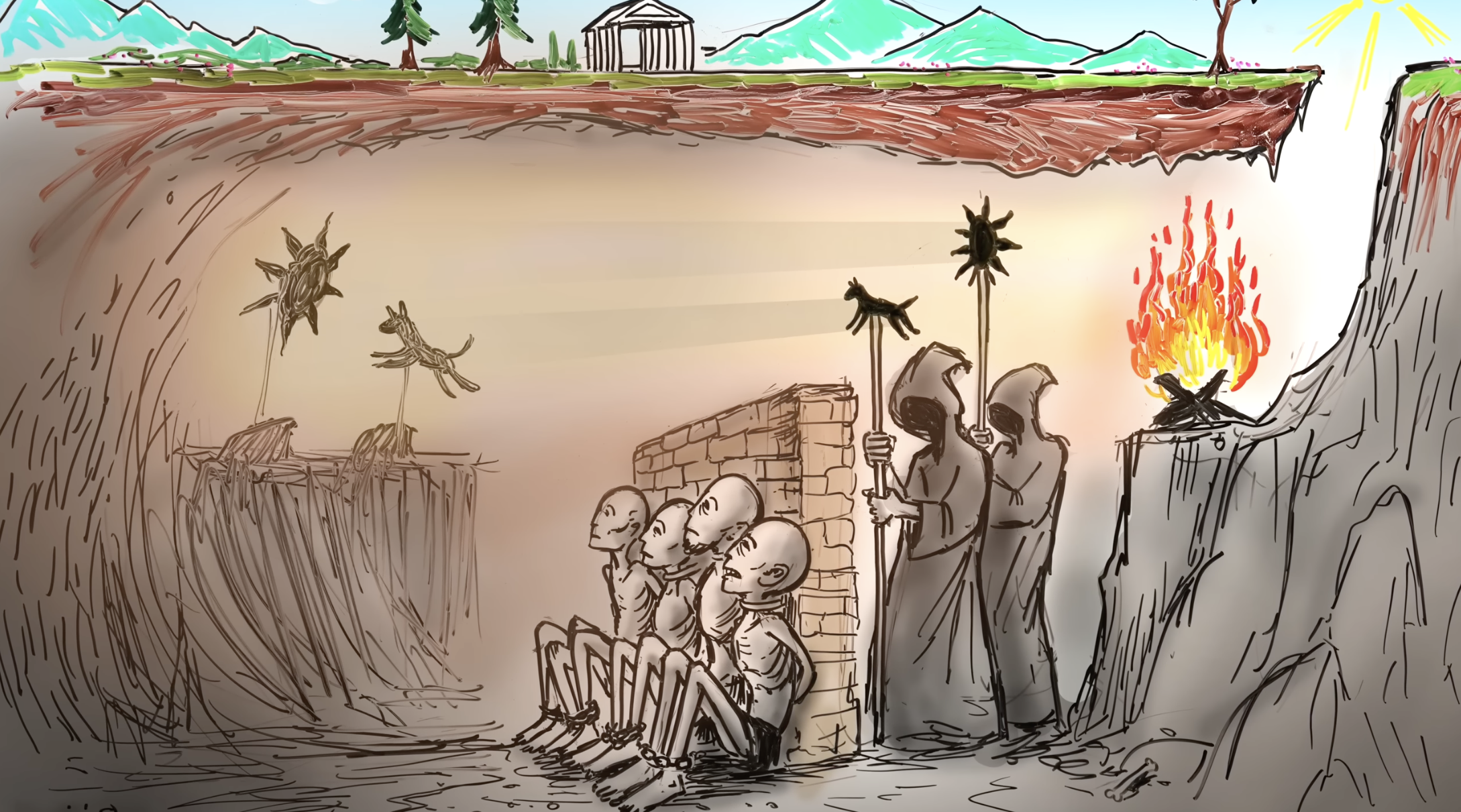Plato’s allegory of the cave is about the emergence from ignorance into enlightenment (knowledge/wisdom). It is a story about a group of people, isolated from birth in a cave, bound so that they can see little of their surroundings save for a cave wall. Upon that wall, shadows, created by people/beings behind a wall, move about.

Illustration from Agrippa’s Diary Video: Summary and Discussion
Knowing nothing else, they assume this play of shadows is all there is of reality.
One day, the chains are removed from one of the cave prisoners, and he is allowed to emerge into the outside world. This emergence into the sunlight is jarring, not just because of its intense brilliance, but because he has realized that their whole world up until that point was an illusion. Over time, he adjusts to this newfound reality. He sees not only the colorful three-dimensional objects around him, but also realizes that the light of the sun is what makes all that he sees visible. He decides to return to the cave to liberate his fellow prisoners.
Upon returning to the cave, the freed prisoner is disoriented and is unable to communicate what he saw in the “outside world.” Seeing his disorientation, the other prisoners think there’s something wrong with him.
Interpretations and Implications
Death of Socrates
There are many ways to interpret this allegory. One of the important historical considerations is that Plato’s mentor, Socrates, was sentenced to death for trying to share his insights into knowledge and wisdom. Plato was deeply troubled by this. So, we can take the allegory of the cave to be a story about the difficulty of sharing and spreading new, provocative ideas.
Meditative Insight
Since we’ve been exploring mindfulness and meditation, we might also look at the cave through that lens. In the early stages of meditation, we focus on the contents of our experience. We may begin to see our everyday experiences with greater clarity and vividness as we learn to look at the world with greater focus and with a beginner’s mind. Over time, we start to shift from investigating the contents of our experience to the context in which those experiences arise. The freed prisoner went from seeing mere shadows, to seeing three-dimensional, colorful forms, to, finally, seeing the light of the sun as that which made all seeing possible. Similarly, we can go from seeing the things that arise in consciousness to becoming more clearly aware of consciousness itself.
Knowledge that Changes Us
The knowledge that the freed prisoner gained upon leaving the cave was more than just more than just propositional knowledge. It was direct, experiential, embodied knowledge that precipitated an irreversible change. Once he went from the world of shadows to the world itself, he could never experience the shadows in the same way. He had been changed.
Digitally Mediated Lives
I wonder what Plato would have to say about our modern world. We live lives largely mediated by digital technologies. Most of our work, entertainment, and communication occur on screens - our modern cave wall. Of course, we have more agency that the cave prisoners in that we can create “shadows” of our own. But, it’s worth considering how the allegory of the cave applies to our relationship with screens.